How to Jump Rope Correctly
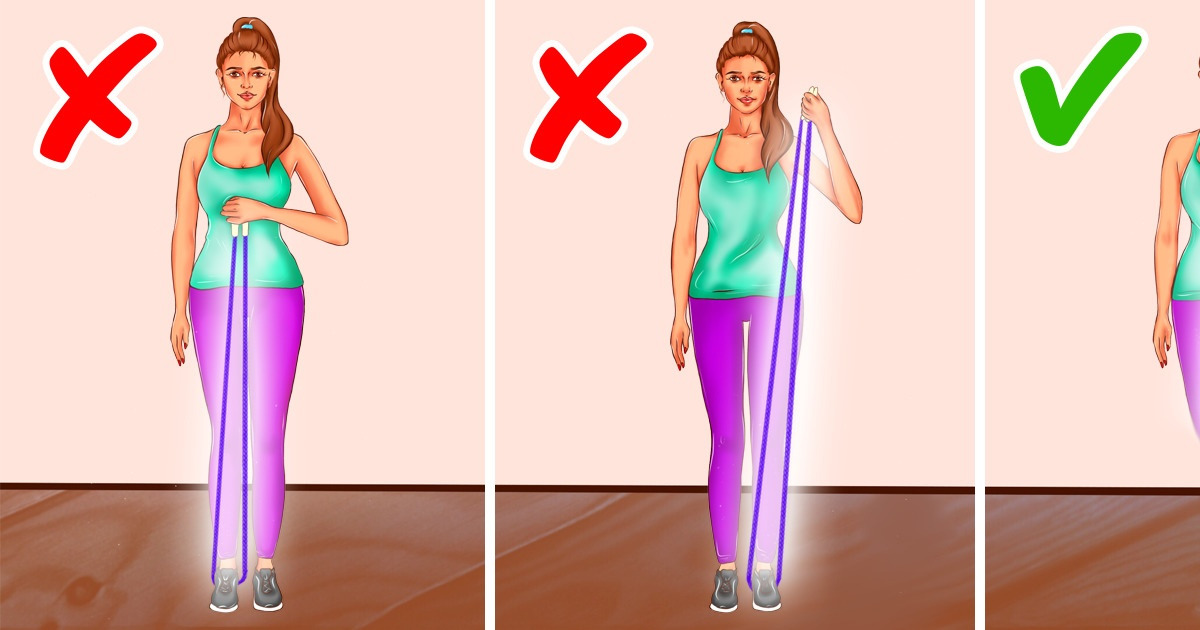
5-Minute Crafts will tell you how to choose a jump rope for a beginner, the correct way to jump, and the types of rope jumping.
How to choose a jump rope
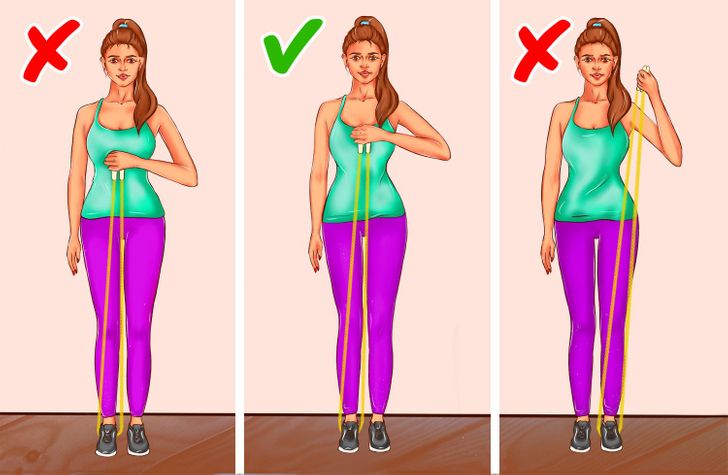
Many beginners make the mistake of choosing a rope made from PVC that’s too tight. It may seem that the lighter the rope, the easier it is to jump, but this isn’t exactly true. With a lightweight jump rope, it’s hard to feel how it rotates around your body, so it’ll be difficult for you to adjust to the rhythm and jump at the right moment. As a result, you will stumble all the time and become frustrated.
Avoid cheap plastic jump ropes and use weighted ones instead. They will help you feel the rope rotating around your body and make it easier for you to know when to jump. Besides, the rhythm will be slow enough for you to perform the exercises without unnecessary stress.
💡 The heavier the rope, the better your muscles will work. For weight loss, medium weight is enough; but to build muscle mass, you’ll need heavier gear.
The size of the rope is determined by the goals of the jumper. Choose a shorter rope for a high-speed workout and a longer one for exercises. Beginners can choose a neutral length using a simple method to find the correct rope size.
Step on the rope with one foot, then bring your feet together. Pull the rope upward, pressing the handles against your chest. The handles should be approximately at the level of your chest. If they’re higher or lower, it might be difficult for you to jump.
💡 You can adjust the length of the rope by tying knots next to the handles. This way, you can change the size of your rope without buying a new one.
Rope jumping basics
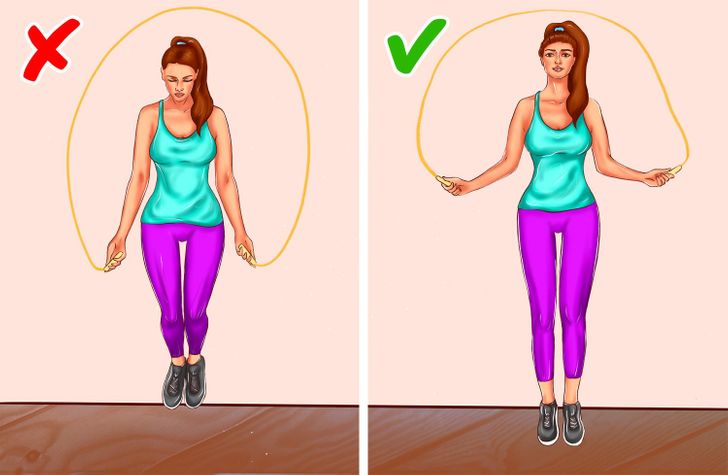
First, train your basic movements without a jump rope:
- Stand up straight. Bend your knees slightly, put your feet together. You should look straight ahead and keep your chin up — this is necessary to breathe correctly.
- Your arms are down along the sides of your body. Now raise your forearms and spread them out to the sides so that they’re at a right angle with your body. The palms of both hands and the navel should be at the same level. You can move your elbows slightly away from your torso if this is more comfortable for you. Use only your hands to rotate the rope. Sometimes it’s enough to move your fingers to keep up the pace.
- Try to jump in this position. Don’t jump too high. Otherwise, you’ll waste energy and lose speed.
When you finish training with the basic movements, you’re ready to jump rope. Start at a low pace, doing 1 to 2 jumps at a time. Once you feel confident, increase the duration. Find your rhythm and have fun jumping.
Types of rope jumps
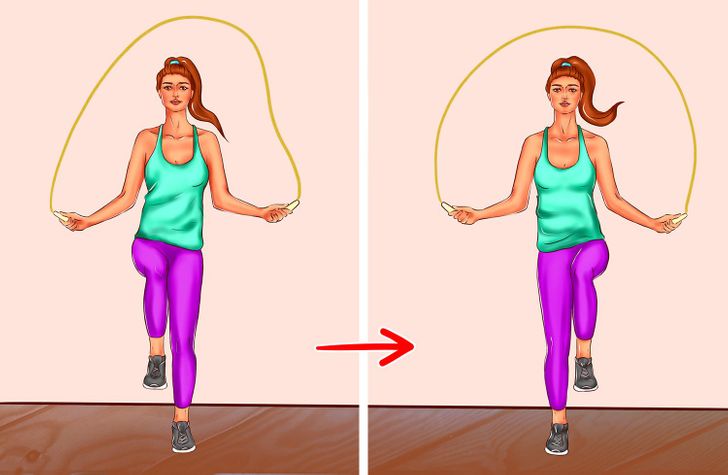
-
Running in place with your knees raised high. Alternate between right and left foot. Raise your knee to the level of your hips and bend it at a right angle.
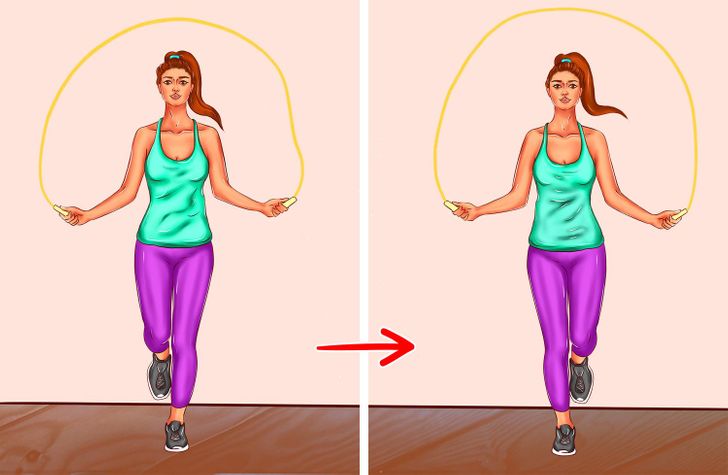
-
Single-leg jumps. First, jump on your left foot, then on the right. Spend 30 seconds on each leg.
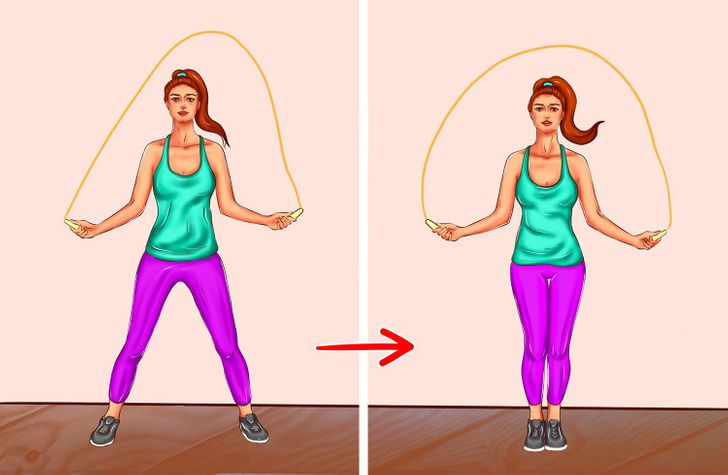
-
Wide-to-narrow jumps. Jump placing your feet apart at shoulder-width and then directly under the hips.
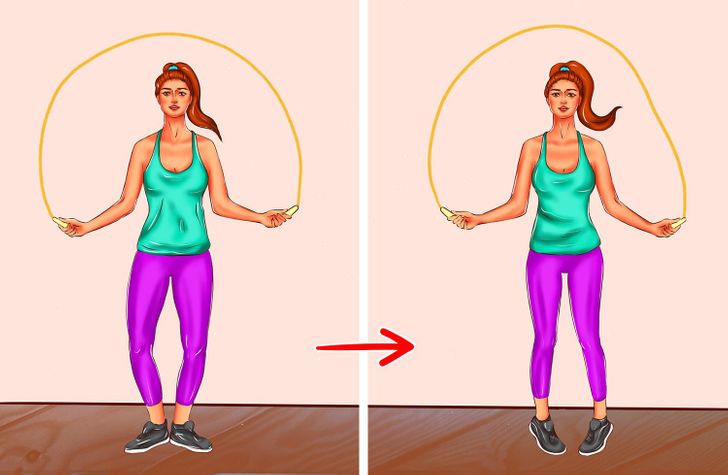
-
External-to-internal rotation jumps. Jump up and rotate your right foot to point toward 2 o’clock and the left foot toward 10 o’clock when you land. As you jump back up, rotate the feet to point to 12 o’clock. To protect your knees, do not over-rotate your feet and make sure you land with your knees slightly bent.
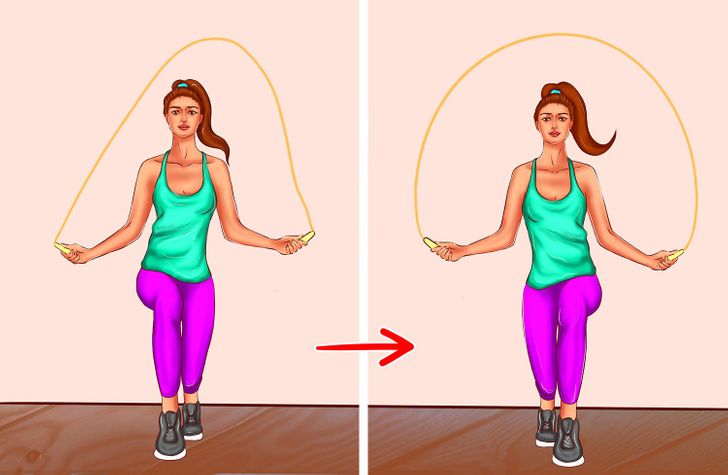
-
Split-leg jumps. Start with your right foot forward and left foot back. As you jump, move your left foot forward and right foot backward before landing.